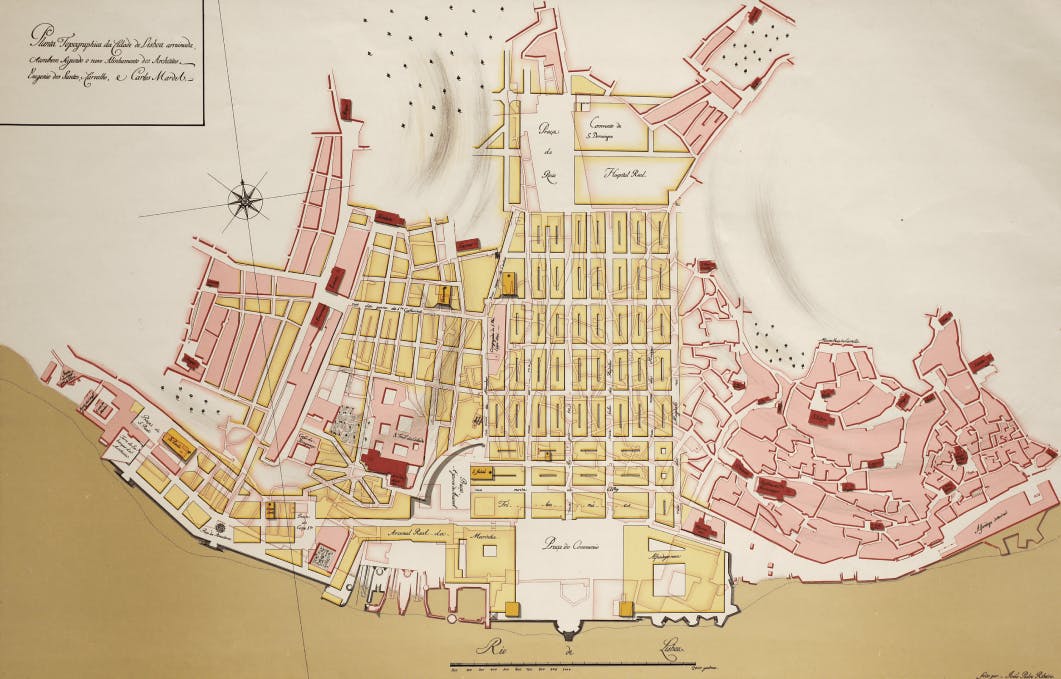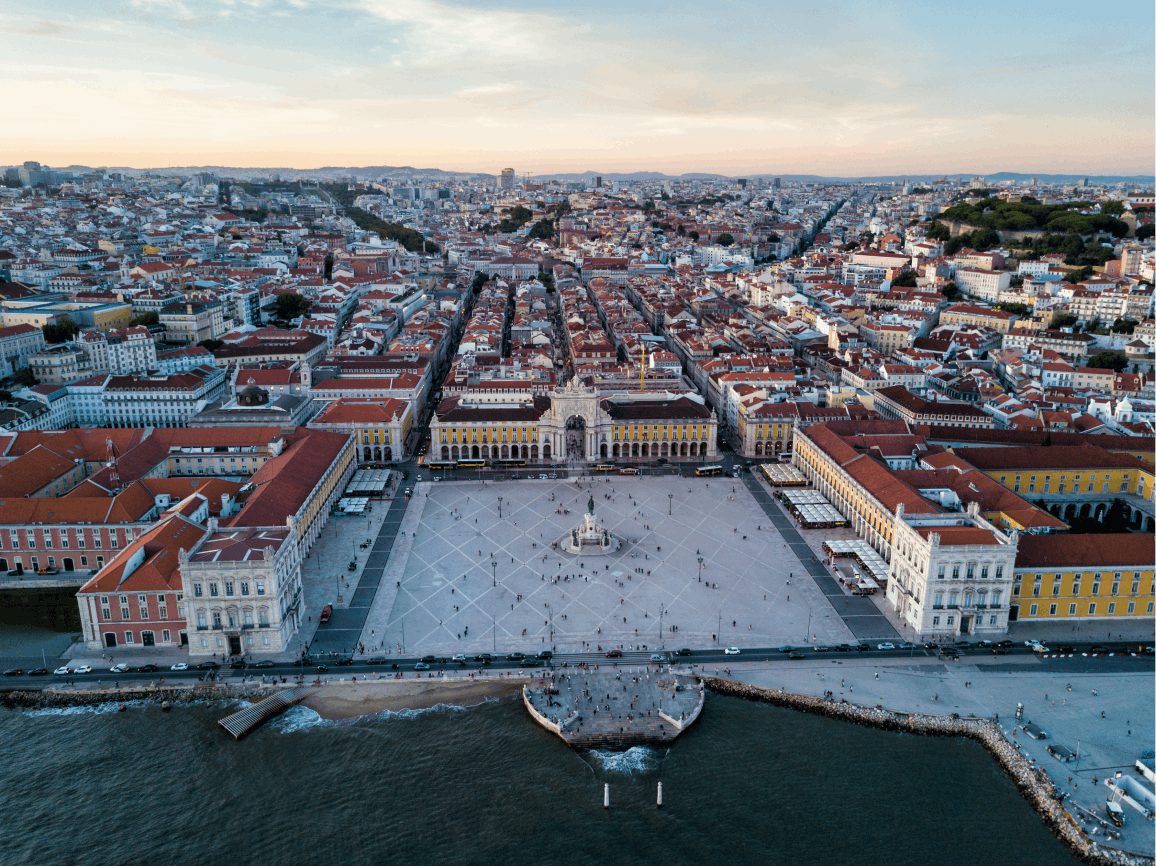The birth of a new Lisbon
After the disaster, it was up to Marquês de Pombal, then Secretary of State, to reorganize the city and ensure that order in the kingdom was restored as soon as possible. Through plans developed by military engineers Manuel da Maia, Eugénio dos Santos and Carlos Mardel, the Secretary implemented a city plan in close relation with the Enlightenment ideals, with orthogonal wide streets and no longer a skyline dominated by church towers and palace domes.
Concerned that a similar tragedy would recur, Marquês de Pombal wanted to ensure that the buildings would have an anti-seismic system. A new construction technique - ‘gaiola pombalina’ -was developed, inspired by traditional methods and thereafter used systematically. Legend has it that the resistance of the structure was tested by the battalion led by Carlos Mardel. The soldiers marched vigorously to imitate seismic waves and the structure resisted. A global sewage system was also implemented and the water supply to the city was improved.
As a result of this measures, the city looks today completely different than it did before the earthquake: in Praça do Comércio, then called Terreiro do Paço, used to be the Royal Palace. Where is now the riverside walk Ribeira das Naus, used to stand the majestical opera house Ópera do Tejo. The Rossio square, the beating heart of the contemporary city, used to be home to the largest hospital in the city, named Hospital Real de Todos os Santos. These and many other important buildings were destroyed, changing forever the face of Lisbon and bringing to life what are now some of the top Lisbon and Portugal tourist attractions and museums.

